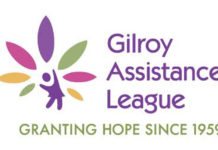September is known by many astronomers to be one of the most
steady and transparent viewing skies of the year. It is not
uncommon to have half or more of our nights clear around the city
of Hollister in the month of September. But if you are able to
venture down south around the Panoche or Pinnacles area, you will
find that almost all the nights are clear mainly because of the
lack of morning or evening fog. The exception, of course, is when
you plan ahead of time to go sky gazing down there
– then you can count on it being the one night when it’s cloudy.
Oh, well.
September is known by many astronomers to be one of the most steady and transparent viewing skies of the year. It is not uncommon to have half or more of our nights clear around the city of Hollister in the month of September. But if you are able to venture down south around the Panoche or Pinnacles area, you will find that almost all the nights are clear mainly because of the lack of morning or evening fog. The exception, of course, is when you plan ahead of time to go sky gazing down there – then you can count on it being the one night when it’s cloudy. Oh, well.
Constellation of the Month
High in the summer sky are three very bright stars that form what is known as the Summer Triangle: Altair, Vega and Deneb. Each one of these stars is located in a different constellation, which will be our Constellations of the Month.
Altair is Arabic for “the flying one,” which is located in the constellation Aquila, the eagle. Altair is the eagle’s eye, flanked by two other stars, which are his beak and crest. The eagle is flying north along the Milky Way, but moving over as to avoid collision with Cygnus, the swan.
Vega, which is the brightest star of the three in the triangle, is in the constellation Lyra, the harp. Lyra is much smaller than the other two and just outside the Milky Way.
Besides Vega, you will see four smaller stars that form a rectangle, and one other star just west of Vega called Epsilon Lyrae. It is also known as the “Double Double Star.” If you look at it in a telescope, it turns out to be two stars. In a larger telescope, each of those turns out to be two stars. Hence, the double double.
Deneb means “tail” in Arabic. It is the tail in the constellation Cygnus – the swan. The swan has a long neck, stretched out as he flies down the middle of the Milky Way. The two stars forming the wings create a cross shape, and that is why it’s sometimes called the “Northern Cross.”
The star at the swan’s head is called Albireo. This is one of the most beautiful double stars in the sky, because the colors of the stars contrast so well – one blue, the other yellow. Cygnus is another one of my favorite constellations, not just because it has some of the most gorgeous objects to view, but I guess because I raise swans right next to my own observatory. It kind of fits.
A couple of weeks ago I had a party of 25 come over and enjoy the night skies with me in my backyard. Ray Becker of DMB was the lucky bidder on the donated prize for the United Way’s live auction, and he brought who were, I’m sure, his best friends. I noticed right away that everyone was having a great time. I mean, a really great time. I was thinking, “Boy, I sure know how to put on a party.” It wasn’t long after that that I had learned they had all had a little party of their own just before coming out to my place. I might add that I was not invited. Just as well, though. I don’t think I could have successfully finished my presentation of the skies if I had partaken of the festivities.
But, I must admit, everyone seemed to have a great time, for I was worried there for a while that they may never leave. But that is where the fun is for me – when visitors enjoy themselves so much that they don’t want to leave my backyard. And that is just fine with me. I just want to thank Ray and his friends for providing me with a very enjoyable evening. Good people.
You’ve heard of astronomers talking about a Blue Moon. I don’t know about you, but I have never seen a blue moon before. Until you find out that a blue moon is when you have two full moons in one month. So, last week when I heard we were going to have a red moon, I thought to myself, “Here we go again. What kind of story are they going to tell us this time? I’m almost sure the moon won’t be red.”
So, last Monday night I stayed up until 4am to witness the event. Well, I must say, I take it all back. I saw the Earth cast a shadow on teh moon that left an almost copper color, or I could say “red” color, over the entire moon’s surface. What a gorgeous site it was. I took as many pictures as I could, figuring if I take enough maybe one will turn out OK. I can only hope that I wasn’t the only one out there that night enjoying the event. I wish everyone could have been there with me.
OK, get out those dusty telescopes and point them to the sky and see what you can see. Don’t forget family and friends when you do. You don’t have to worry about what you and your friend are looking at – the sky is perfectly capable of speaking for itself. Clear skies!












